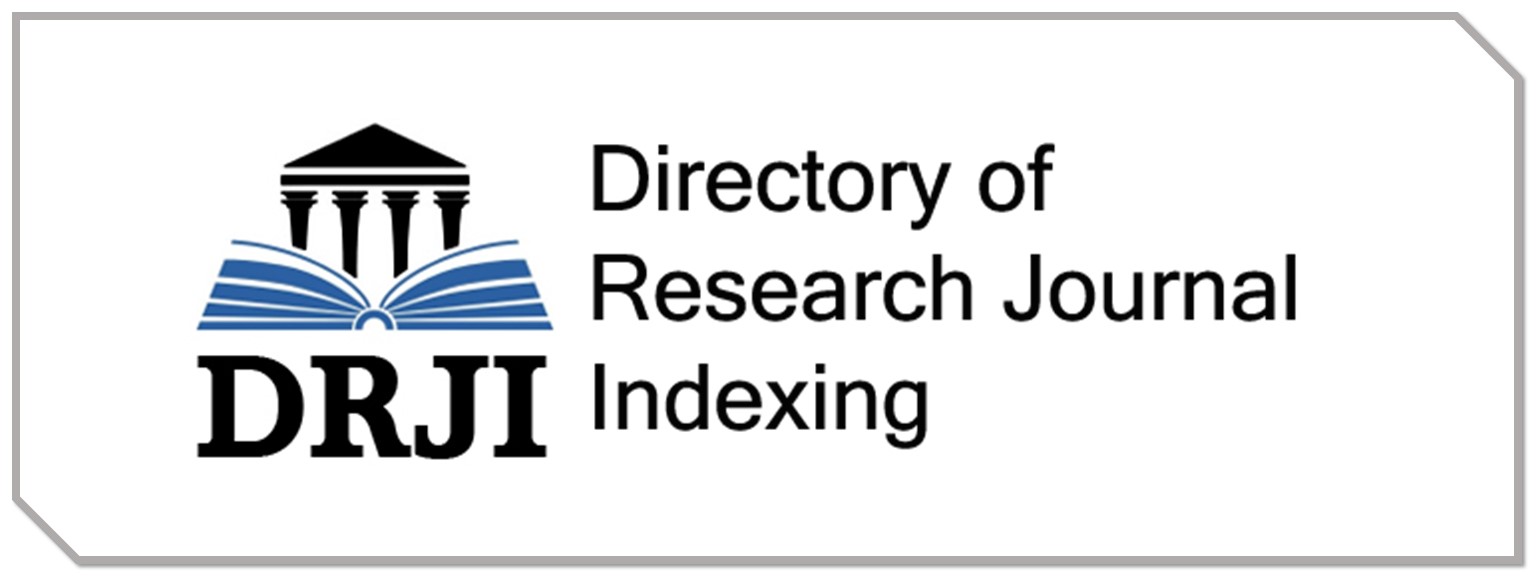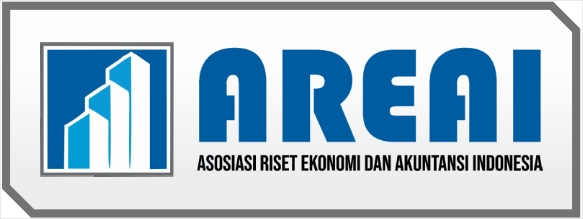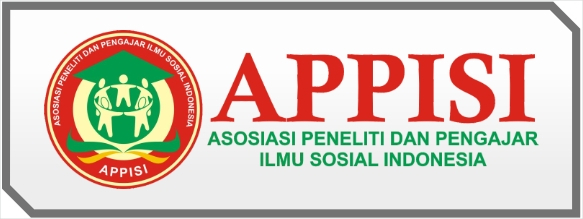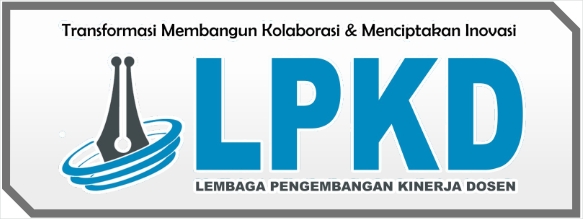KESAN PENILAIAN KINERJA, STRUKTUR ORGANISASI DAN KINERJA KERJA GURU
DOI:
https://doi.org/10.55606/jempper.v1i3.731Kata Kunci:
Organizational Structure, Performance Appraisal Impression, Middle School, Teacher Work AchievementAbstrak
This study examines the impression of performance appraisal and organizational structure as a correlation of school teacher performance in the Special Region of Yogyakarta. The population of this study consisted of 13,039 public secondary school teachers in the Province of the Special Region of Yogyakarta. By using simple random sampling technique, as many as 440 respondents. Three (3) questionnaires developed by the researcher; entitled: Organizational Structure Questionnaire (OSQ), Performance Assessment Impression Questionnaire (PAIQ), and Teacher Performance Questionnaire (TJPQ) with reliability coefficients of 0.73, 0.69 and 0.76 were used for data collection. It was found that there was a significant relationship between organizational structure and teacher performance in public secondary schools in the Special Region of Yogyakarta in the order (r = 0.191, P<.05). It was also found that there was a significant relationship between performance appraisal impressions and the performance of public secondary school teachers in the Special Region of Yogyakarta in the order (r = 0.112, P<.05). There is a significant joint contribution of the independent variables (organizational structure and impression of performance appraisal) to the dependent variable (performance of public secondary school teachers); R = 0.457, P < 0.05. It was further revealed that {32.0% (Adj. R2 = 0.320)} that about 33% of the variance in the performance of public secondary school teachers was due to a linear combination of organizational structure and performance appraisal impressions. Organizational structure and performance appraisal impressions were found to be significant and highly determine the performance of school teachers with a P value of less than 0.05 and the magnitude of the organizational structure (ÿ = 0.265, t = 5.328, P<.05) and performance appraisal impressions (ÿ = 0.193, t). = 3.644, P<.05).
Referensi
Ajayi, A., Waliu, S. B., Ajayi, O. A., Olodude, D. O., & Olowoporoku, A. J. (2017). Influence of personality traits and work commitment on job performance of public secondary school teachers. International Journal of Rural Development, Environment and Health Research, 1(1), 68-79.
Akinbowale, M. (2013). The impact of performance appraisal policy on employee performance. Mediterranean Journal of Social Science, 14(4), 123-130.
Aloo, J. O., Ajowi, J. O., & Aloka, F. J. (2017). Influence of teacher performance appraisal on effectiveness in curriculum evaluation in Kenya public secondary schools. Academic Journal of Interdisciplinary Studies, 6(3), 77-84.
Appelbaum, S. H. (2014). Globalization of performance appraisals: Theory and applications. Emerald Journals, 49(4), 236-243.
Aquinis, H. (2017). Performance management. New Jersey, Pearson Prentice Hall; Upper Saddle River.
Armstrong, M. (2016). Performance management: Key strategies and practical guidelines, 3rd ed. London: Kogan Page.
Bambang, M. S., Made, I. P., Muni, S., & Imam, G. (2016). Effect of organizational structure, leadership and trust on job performance of employee. International Review of Management and Marketing, 6(4), 711-721.
Boswell, W. R., & Boudreau, J. W. (2012). How leading companies create, measure, and achieve strategic results through line of sight. Journal of Management Decision, 39, 851– 859.
Burnas, R. G. (2012). An empirical comparison of the relative effects of rater response bias on three rating scale formats. Journal of Applied Psychology, 59, 307 – 312.
Cameron, D. (2014). Performance appraisal and review. England, MCB Publication Ltd, the Publishers.
Chaithra, V. K., & Uma, S. H. (2018). Job performance and secondary school teachers. International Journal of Pure Applied Journal, 6(2), 854-860.
Chapman, A. (2015). Performance appraisal. Source from http://www.businessballs.com/performan ce-appraisals
Colquitt, J. A. (2009). Organizational behaviour: Improving performance and commitment in the workplace. New York: McGraw Hill.
Cooper, W. H. (2013). Ubiquitous halo psychological. Bulletin, No. 91, Pp. 218 – 244.
Dabo, S. A. (2016). Enhance job satisfaction for teachers: A strategies for achieving transformation of secondary education in Nigeria. Journal of Education and Practice, 7(15), 37-41.
Daft, R. L. (2014). Organization theory and Design (8th ed.). RR Donnelley & Sons Company.
DeNisi, A. S., & Pritchard, R. D. (2016). Performance appraisal, performance management and improving individual performance: A motivational framework. Management and Organization Review, 2(2), 253-277.
Dess, G. G. (2017). Maximum flexibility with primis cases. McGraw Hill Irwin.
Djamaluddin, P. (2018). Relationship between organizational structure and organizational culture with teacher performance. Advance in Social Science, Education and Humanities Research, 200, 710-716.
Edu, G. O., & Kalu, I. M. (2012). Influence of academic qualification on gender on teachers’ perception of difficult concept in primary science in Ikom, educational zone of Cross River.
Eldman, D. (2013). Managing individual and group behaviour in organism. Japan, McGraw Hill Book Company.
Elsaid, N. M., Okasha., A. E., & Abdelghaly, A. A. (2015). Defining and solving the organizational structure problems to improve the performance of Ministry of State for Environmental Affairs-Egypt. International Journal of Scientific and Research Publications, 3(10), 1-10.
Grant, R. M. (2014). Challenge to management theory and practice. Sloan Journal of Management Review, 35, 25-35.
Greenberg, J. (2016). Managing Behaviour in Organization. 5th ed. New Jersey: Pearson Education, Inc.
Griffin, R. W. (2017). Management (5th ed.). Houghton Mifflin Company.
Hale, J. A. (2014). Performance-based management: What every manager should do to get results. San Francisco: Japan, John Wiley & Sons, Inc.
Hrebiniak, L. G. (2017). Industry differences in environmental uncertainty and organizational characteristics related to uncertainty. Academy of Management Journal, 23, 750-759.
Imam, N. S. (2013). Teacher training and welfare package as correlates of teacher effectiveness in Ikorodu local government area of Lagos State. M.Ed Dissertation.Department of Educational Administrationand Planning. Nigeria: University of Calabar.
Ivancevich, J. M. (2018). Organizations behaviour and management. 8th ed. Singapore: McGraw-Hill/Irwin.
Jain, D., & Garg, M. S. (2013). Awareness towards the performance appraisal systems in HRH group of Hotels. International Journal of Marketing, Financial Services and Management Research, 2(4), 20-49.
Kampkotter, P. S. (2014). Impact of performance appraisal on corporate profitability. Indian System Research Journal, 1(4), 20-42.
Kay, E, M. H. (2013). Effects of threat in performance appraisal interview. Journal of Applied Psychology, 49, 311 – 317.
Lunenburg, F. C., & Ornstein, A. C. (2015). Educational administration, concepts and practices. Third Edition. USA: Wadsworth.
Mackanzle, D. O. (2015). An uneasy look at performance appraisal. USA, Harvard Business Review, Winston.
Mbaraka, R. (2015). A comparative analysis of organizational structure and effectiveness between public and private universities. International Journal of Humanities and Social Science Invention, 4(8), 15-25.
McShane, S.L., & Mary, A.V.G. (2014). Organizational behaviour. 2nd ed. New York: McGraw-Hill/Irwin.
Mehta, S. (2017). Personality of teachers. International Journal of Business and Management Tomorrow, 2(2), 1-9.
Meyer, M. W. (2015). Rethinking performance measurement, beyond the balanced scorecard. New York: Cambridge University Press.
Momoh, Z., & Kolo, M. (2017). An assessment of performance evaluation on feedback in government secondary school in Plateau State. Journal of Education in Black Sea Region, 3(1), 171-185.
Muhammad, S. M., & Surayya, A. (2013). Performance appraisal and employee’s motivation in Pakistan. Pakistan Journal of Social Sciences, 33(1), 179-189.
Mustafa, G., Richard, G., Kjell, G., & Hanan, G. A. (2019). Structural impact on formation of self-efficacy and its performance effects. Journal of Sustainability, 11, 1-24.
Nelson, D. L., & James, C. Q. (2016). Organizational behaviour: Foundations, realities and challenges. 5th ed. Ohio: Thomson South-Western.
Obasi, K., & Ohia, A. N. (2014). Teacher performance evaluation techniques in public and private secondary school in South East, Nigeria. Global Journal of Educational Research, 13, 117-123.
Ogundele, M. O., Musa, J. M., & Jimba, D. N. (2015). Peace education in nigerian schools. problems and prospects. Educational Research International, 4(2), 100-106.
Ogunleye, A. W. (2015). Strategies for improving teachers’ performance in secondary school of Ondo state. Afro Asian Journal of Social Sciences, 4(11), 1-14.
Pelin, K., Kanten, S., & Merit, G. (2015). Effects of organizational structure and learning organizational on job embeddedness and individual adaptive performance. Procedia Economics and Finance.
Randall, S. S., & Jackson, S. E. (2016). Human resource management – positioning for the 21st century (6th ed.). England, Person Professional Ltd.
Robbins, R. W. (2016). The organization of marketing activities: a contingency theory of structure and performance. Journal of Marketing, 49, 13-25.
Roberson, Q. M., & Stewart, M. M. (2016). Understanding the motivational effects of procedural and informational justice in feedback processes. British Journal of Psychology, 97(3), 281-298.
Santiago, P., & Benavides, F., (2016). Teacher evaluation. www.oecd.Org/edu/teacherev
Seniwoliba, J. A. (2016). Assessing the performance appraisal concept of the local government service in Ghana. Academic Journals, 8(15), 599-611.
Shani, A. B. (2015). Behaviour in organizations: An experimental approach. Singapore: McGraw-Hill/Irwin.
Sonnentag, S. (2012), Psychological management of individual performance. West Sussex: John Wiley & Sons, Ltd.
Stephen, R., & Thimoty, J. (2014). Organization behaviour. 13th ed. Upper Saddle River, New Jersey: Perason Education, Inc.
Tsai, C., & Wang, W. (2013). Exploring the factors associated with employees’ perceived appraisal accuracy: A study of Chinese state-owned enterprises. The International Journal of Human Resource Management, 24(11-12), 2197-2220.
Wesly, H. (2018). Impact of organizational culture, organizational structure and jib-satisfaction on high school teachers’ job performance. Faculty of Mathematics and Basic Science, the State University of Medan
















